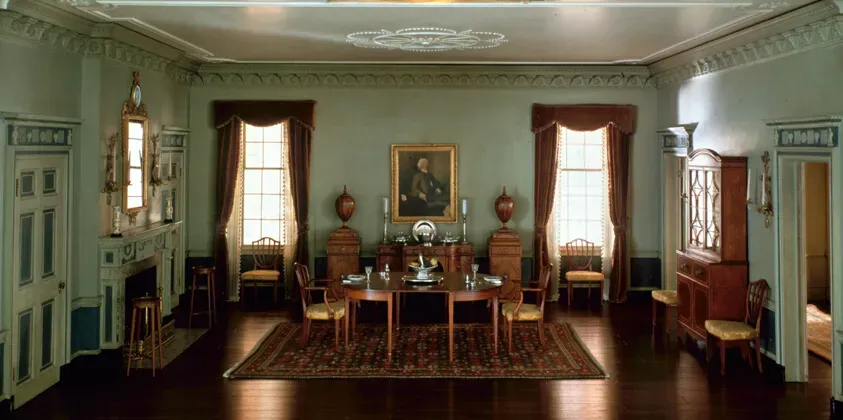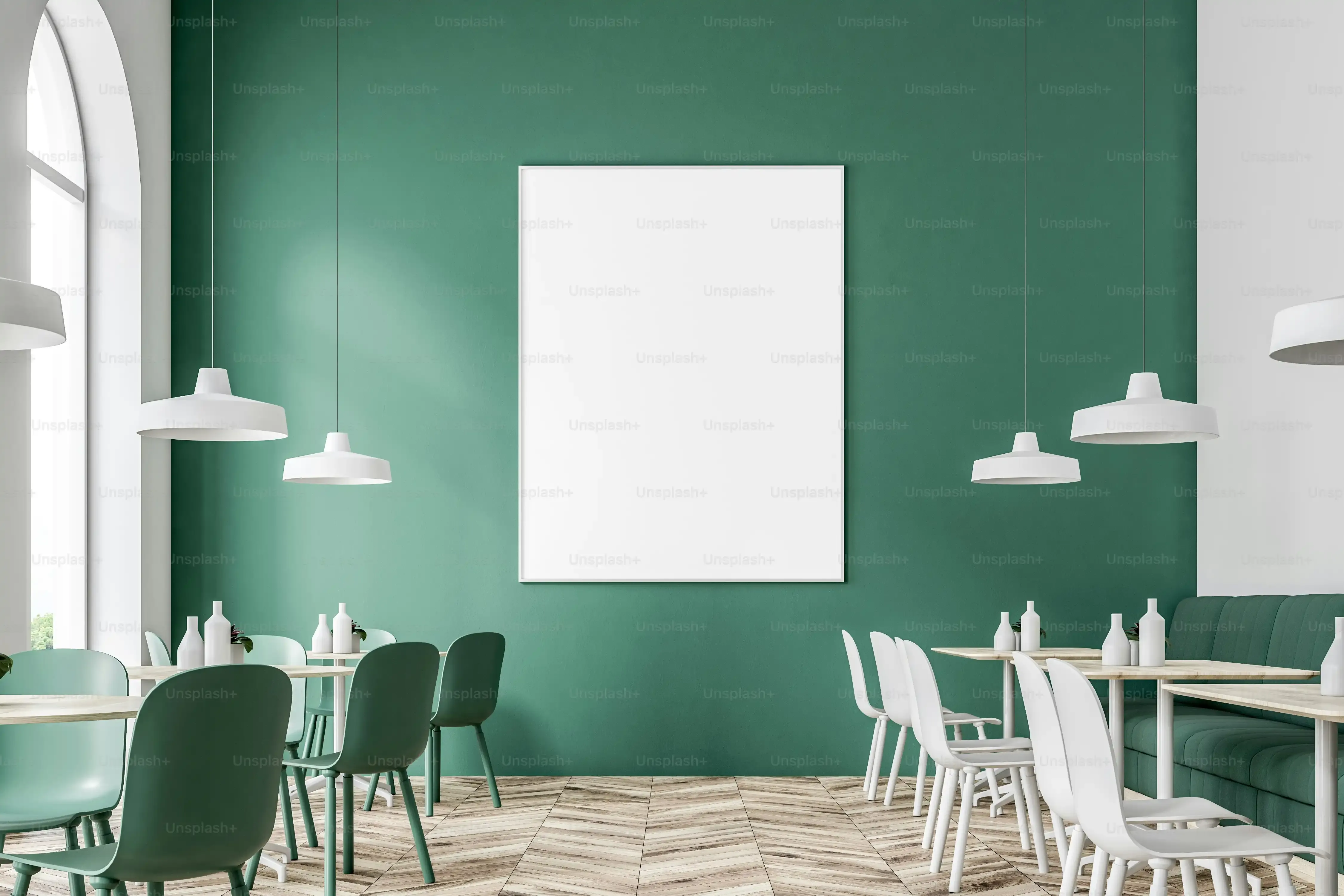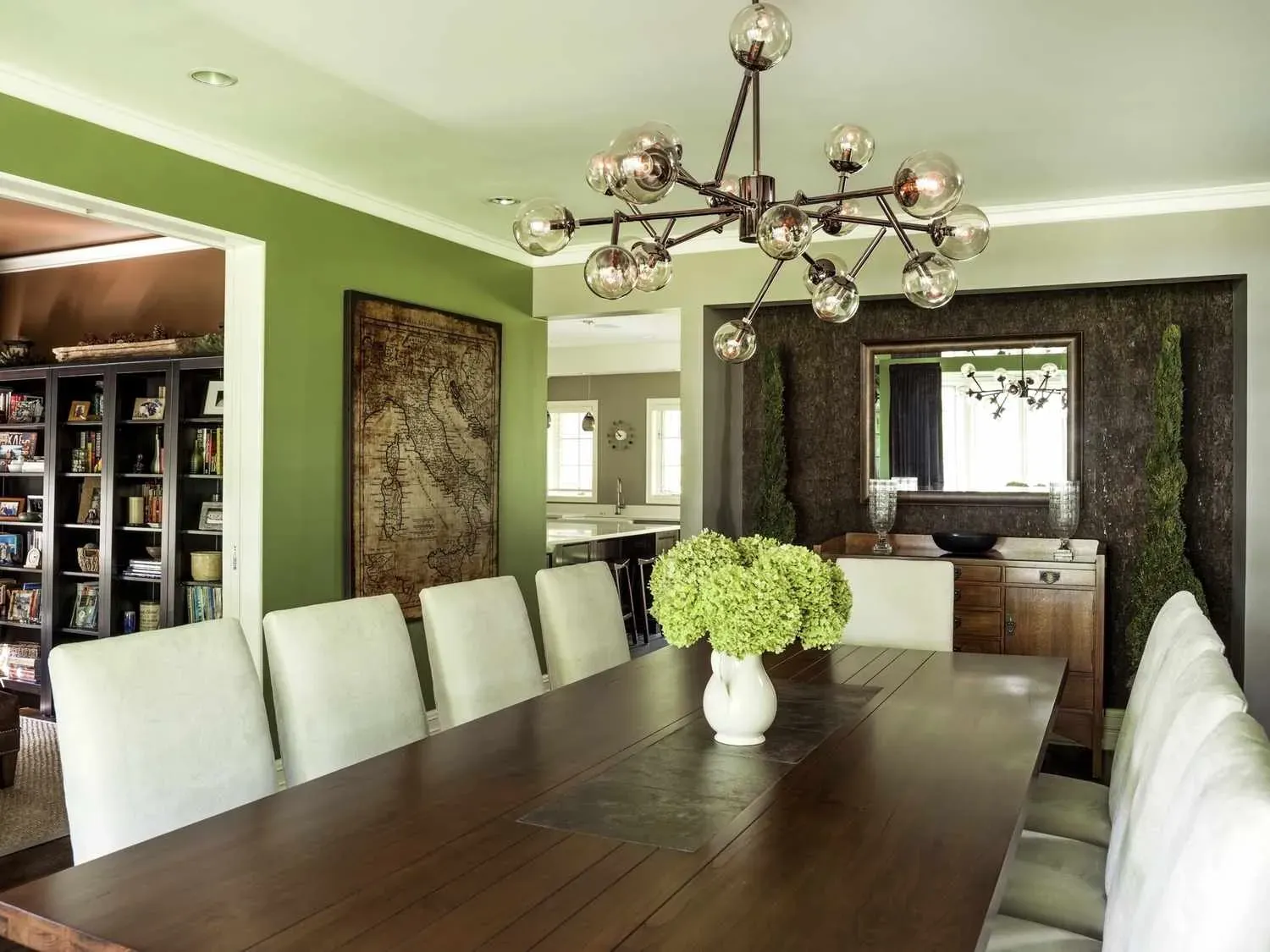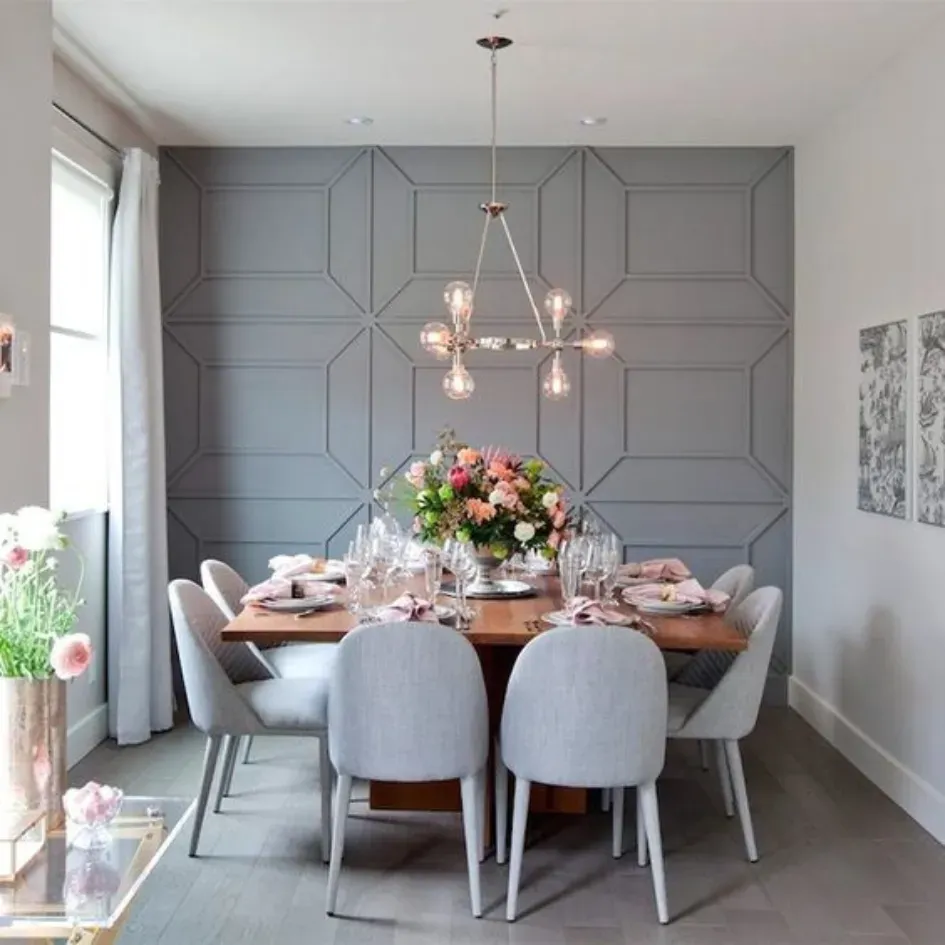Table of Contents
Let's be honest, sometimes your dining room feels a bit...meh. It's the place where meals happen, sure, but does it feel special? Does it spark conversation or just serve as a backdrop for hurried weeknight dinners? If your dining space is feeling a little flat, maybe it's time to give it a jolt of personality. That's where the magic of an accent wall comes in.
Why Bother with a Dining Room Accent Wall Anyway?

Why Bother with a Dining Room Accent Wall Anyway?
It Gives the Room a Focal Point
Walk into most dining rooms, and your eye just kind of...wanders. There's the table, the chairs, maybe a sideboard. Nice enough, but nothing screams "Look here!" An accent wall changes that immediately. It's like putting a spotlight on one area, giving the room purpose and direction. Suddenly, that wall becomes the star, anchoring the space and making everything else feel more intentional. It’s the quickest way to make a bland box feel like a designed room.
Injects Personality and Mood
Your dining room shouldn't feel like a sterile waiting area. It's where conversations flow, stories are shared, and connections happen. The right accent wall color can dramatically shift the mood. A deep, moody blue can feel intimate and sophisticated, perfect for lingering dinners. A vibrant, energetic red might make you feel like you're in a lively bistro. It's not just about pretty colors; it's about creating an atmosphere that enhances the dining experience. This is precisely why considering accent wall color ideas for dining room is more than just a decorating whim; it's about setting the stage.
Quick Wins with an Accent Wall:
- Defines the dining area in open-concept layouts.
- Draws attention to architectural features or artwork.
- Makes the room feel more dynamic and less flat.
- Allows you to experiment with bold color without committing to the whole room.
- Provides a backdrop that makes furniture and decor pop.
So, What Are the Best Accent Wall Color Ideas for Dining Room?

So, What Are the Best Accent Wall Color Ideas for Dining Room?
Starting the Color Conversation: Where Do You Even Begin?
Alright, so you're sold on the idea of an accent wall. Great! Now comes the fun (and sometimes slightly overwhelming) part: picking the color. When figuring out the best accent wall color ideas for dining room, don't just grab a paint chip that looks pretty in the store. Think about the existing elements in your room. What color are your dining chairs? Is your table dark wood, light wood, or something else entirely? What kind of light does the room get? A color that looks stunning in a bright, south-facing room might fall flat in a dimmer space. Consider the mood you're aiming for – cozy and intimate, or bright and lively? This isn't just about aesthetics; it's about how the color will interact with everything else and how it makes you *feel* while you're using the space.
Beyond the Basics: Thinking About Impact
The best accent wall color ideas for dining room aren't always the most obvious ones. Sure, a safe navy or a classic charcoal is fine, but where's the fun in that? This is your chance to take a calculated risk. Maybe you have neutral walls elsewhere – this is your opportunity to introduce a rich jewel tone like emerald green or deep sapphire. Or perhaps your style is more minimalist; a soft, dusty rose or a warm terracotta could add warmth without being overpowering. Don't just think about the color itself, think about its impact. How will it make your artwork pop? Will it provide a dramatic backdrop for holiday gatherings? The goal is a color that complements your existing decor while adding that much-needed punch.
Factors to Consider for Your Accent Wall:
- Existing furniture colors and wood tones.
- Amount of natural and artificial light.
- Desired mood (formal, casual, energetic, calm).
- Colors in adjacent rooms (especially in open plans).
- Any existing artwork or textiles you want to highlight.
Deep Dive: Specific Accent Wall Color Ideas for Dining Room (And Why They Work)

Deep Dive: Specific Accent Wall Color Ideas for Dining Room (And Why They Work)
let's get down to brass tacks. You've decided you want an accent wall, and you've thought about the vibe you're going for. Now, what colors actually deliver? We're talking about specific, tried-and-true accent wall color ideas for dining room that consistently hit the mark. Forget trendy colors that will look dated in a year; these are colors with staying power, chosen for their ability to enhance the dining experience. We're not just pulling colors out of a hat; there's a reason certain shades work better than others in a space dedicated to food, conversation, and gathering. It's about balancing energy, warmth, and sophistication.
More Than Just Paint: Texture & Pattern Ideas for Your Dining Room Wall

More Than Just Paint: Texture & Pattern Ideas for Your Dining Room Wall
Wallpaper: The Pattern Powerhouse
Alright, so we've talked a lot about paint colors for your accent wall color ideas for dining room. But let's not pretend paint is the only game in town. Sometimes, a flat color just isn't enough drama or visual interest. That's where wallpaper waltzes in. It’s not your grandma’s floral border anymore. Think bold geometrics, subtle grasscloth textures, dramatic murals, or even patterns that mimic brick or concrete. Wallpaper adds an immediate layer of sophistication and depth that paint struggles to achieve on its own. It’s a commitment, yes, but the payoff in personality is huge. Imagine a moody botanical print behind your dining table – instantly feels like a chic, slightly edgy supper club, right?
Textured Finishes: Adding Another Dimension
If wallpaper feels a bit too... busy, or you just prefer the look of paint but want more going on, consider textured finishes. We're talking Venetian plaster for an old-world, slightly imperfect elegance, or perhaps a limewash technique that gives a soft, cloudy, organic feel. Even a simple matte finish can create a different light reflection than an eggshell or satin. These aren't just about color; they’re about how light plays across the surface, adding a subtle tactile quality that makes the wall feel more substantial and interesting. It’s the difference between a flat photograph and a sculpture – one is two-dimensional, the other has presence.
Thinking about texture or pattern?
- Does it clash with your existing textiles (rug, curtains, upholstery)?
- How will light hit the texture/pattern throughout the day?
- Is the pattern scale appropriate for the size of the wall and the room?
- Can you live with this pattern/texture long-term, or is it a fleeting trend?
Beyond the Surface: Architectural Elements
Sometimes the best "accent" isn't paint or paper at all, but adding an architectural element. Consider installing shiplap for a relaxed, modern farmhouse vibe, or classic wainscoting or picture frame molding for a more traditional, layered look. Reclaimed wood planks can bring warmth and rustic charm. Even faux brick or stone panels, used judiciously, can add significant character. These elements provide inherent texture and visual weight before you even think about color. Painting molding the same color as the wall creates subtle dimension, while painting it a contrasting color makes it pop even more. This approach turns the wall itself into a piece of art, giving your dining room a custom, built-in feel that paint alone can't replicate.
Practical Tips for Your Dining Room Accent Wall Color Ideas Project

Practical Tips for Your Dining Room Accent Wall Color Ideas Project
Don't Skip the Samples (Seriously)
you've scrolled through a million Pinterest boards and you think you've found the perfect shade for your accent wall color ideas for dining room. Great! Now, go buy sample pots. Not one, maybe two or three shades that are close. Paint decent-sized swatches (at least 1x1 foot) on the actual wall you plan to accent. Why? Because that tiny chip in the store or the color on your screen is a liar. Light changes everything. The color will look different in the morning sun, under your dining room chandelier at night, and even depending on what's outside your window. Live with the samples for a few days. See how they interact with your furniture, your artwork, and the colors on the adjacent walls. This step feels tedious, but it's the absolute best way to avoid spending hours painting a whole wall only to hate it.
Prep Work is Your Best Friend
Look, nobody *enjoys* prepping a wall for paint. It's boring, and you just want to get to the fun part – seeing that new accent wall color pop. But skipping the prep is like building a fancy house on a shaky foundation. You'll regret it. Clean the wall thoroughly. Fill any holes or cracks, sand them smooth, and wipe away the dust. If your wall is in rough shape or you're going from a dark color to light (or vice versa), primer is non-negotiable. It ensures even coverage and true color. Taping off edges meticulously takes time, but it saves you from messy drips and crooked lines that scream "amateur hour." Seriously, a clean, smooth, properly prepped wall makes the actual painting process faster and gives you a professional-looking finish.
Essential Prep Steps:
- Clean the wall (sugar soap or mild detergent works).
- Fill holes and cracks with spackle.
- Sand patched areas smooth.
- Apply painter's tape along edges, baseboards, and trim.
- Cover furniture and the floor with drop cloths.
- Apply primer if needed (especially for color changes or damaged walls).
Painting Day: Take Your Time, Trust the Process
The samples are approved, the prep is done, and you've got your paint and brushes ready. It's painting time! For the best results with your accent wall color ideas for dining room, use a good quality brush for cutting in around the edges and a roller for the main wall area. Don't overload your brush or roller – it leads to drips and uneven coverage. Apply paint in smooth, even strokes, working in sections. Two thin coats are almost always better than one thick one; it gives a smoother finish and better color depth. Let the first coat dry completely according to the paint can instructions before applying the second. Resist the urge to pull the tape off while the paint is wet; wait until it's dry to the touch for the cleanest lines. Step back occasionally to admire your progress and catch any missed spots. It's a process, but seeing that wall come to life is pretty satisfying.
Ready to Make Your Mark?
So there you have it. An accent wall in your dining room isn't just about slapping some paint on a surface; it's about setting a mood, guiding the eye, and making the space feel intentional. We've covered why it works, specific shades that pack a punch, and ways to go beyond just color. The options are plentiful, and honestly, the biggest risk is ending up with a dining room that's no longer forgettable. Pick a color, commit to it, and see what happens. Your next dinner party might just be a little more vibrant because of it.
